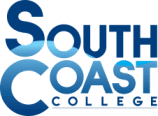The virtual world has afforded opportunities to share perspectives of leaders in various professions that at best would not so readily be possible in the pre-COVID days. The faculty and staff at South Coast College were honored to be able to spend two hours with Michale McComis, the highly regarded Executive Director of the Accrediting Commission of Career Schools and Colleges (ACCSC).

Executive Director
ACCSC
Dr. McComis began his presentation by telling everyone to open their Standards of Accreditation. He displayed the first page and made everyone believe that his intent was a presentation on the Standards. At that point, it was fortunate that he could not see the expressions on people’s faces. In essence, what he pretended to be his topic was what the faculty and staff had expected — a presentation on accreditation standards. He enjoyed the shock value but instead continued with an uplifting, inspiring, motivational look at how to focus on the best practices of high achieving schools.
Although the presentation concerned accreditation, it was more. It contained life lessons learned by someone who has made it to the pinnacle of leadership of one of the major accrediting agencies and who is willing to share his acquired expertise to help schools understand the attributes of highly successful institutions.
The fact that someone of his stature would make himself accessible to the South Coast College faculty and staff is worthy of note by leaders in any profession. By his presence, he sent a clear message: Model the behavior that you want. Stated in another way: It is important for leaders to be accessible to their constituents. And the leader, he was quick to mention, is not only the person who sits in the executive office. Everyone who works in the school is a leader.
As he moved through his presentation, he often provided many unspoken but intended messages. The messages that he sought to convey were delivered to the faculty and staff through memorable images that will linger in the minds of the faculty/staff far longer than any mere words. Each image told a story and held a meaning beyond the story itself. Each held a message that he was trying to convey that would later resound in suggested practical application by the people he was addressing.
An example of his methodology is found in these two slides:


The slides contain an image of a girl holding a lamb. After showing the slide the first time, Dr. McComis probed to find out what everyone thought was within the frame of the picture that contained the image of the girl. After revisiting it a second time, he asked for a follow-up of what everyone thought the story of the girl to be – what was beyond the frame of the picture.
A message to be derived was that students who come to school all have a story. As a school, we have to determine where they are in their journey and to help them shape the lives they are building for themselves.
The images in his following slides were carefully woven together to culminate in eliciting the philosophy of ACCSC and its leadership without explicitly stating it and demonstrating that the ACCSC mission statement was not just a statement written down somewhere.
ACCSC Mission Statement
The mission is to ensure quality education that enhances student success in the workplace. This mission is achieved through fostering its core values of integrity, accountability, continuous improvement, and community consisting of strong partnerships that emphasize respect and mutual support.
What ACCSC is hoping to achieve through reaching out to schools is a sincere attempt to help schools understand the values of ACCSC and know that ACCSC is there to help schools become the best that they can be.
Through his thoughtful presentation, he was able to help the South Coast College faculty and staff understand the mission of ACCSC. The faculty and staff went away from the presentation with a renewed sense of purpose and a feeling that it was possible for them in some small way to make a difference and that the difference that they make as individuals can end up significantly impacting the success of the students and ultimately the college.
Some of the takeaways from individual members of the faculty/staff from this presentation — and how these individuals could, even in a small way, apply the lessons learned — were the following:
Perceived message 01 – Model the behavior you want your students — or if you are in administration, your employees — to have.
- How to Apply: If I want my students to learn time management, I must show them how to achieve time management, not just talk about it.
Perceived message 02 -Things aren’t usually as they appear when you are dealing with a student, and everyone has a different perspective when it comes to what they see or how they view what is happening. It is important to research, find out the facts before arriving at a conclusion. Learn about that student’s story.
- How to Apply: What do students really mean when they say …. What is behind the statement? Survey students using your tools the tools provided by ACCSC to survey students to determine exactly how they think and feel.
Perceived Message 03 – All schools have their strengths – something to feel good about — but working on the challenges makes the school stronger.
- How to Apply: Find a way to improve student outcomes through a process that includes self-evaluation to determine the challenges and use reflection and planning to continually address them.
Perceived Message 04 – Teach students to solve their own problems.
- How to Apply: Look for opportunities to have students engage in dialogue with one another to help one another out as in the orientation sessions.
Perceived Message 05 – Help students to become successful by preparing them for how to study and how to manage their time and other skills that they may need to be successful.
- How to Apply: Extend the orientation to the entire student body to expand collegiality among programs and to help them become better prepared to meet the requirements of their programs.
Perceived Message 06 Reaching out to the community is way to engender student and staff camaraderie, to foster a spirit of helping others, and to achieve a way of attaining the personal gratification that comes from helping others.
- How to Apply: Assess the skills that your faculty and staff possess and see where their talents and skills can apply out there in the community.
In conclusion, after six months of the school’s emphasis on coping with the COVID experience, it was a refreshing look at what accreditation is all about – helping schools to focus on improvement, outreaching to the community to build meaningful mutually beneficial partnerships, and always keeping the student first in mind.


